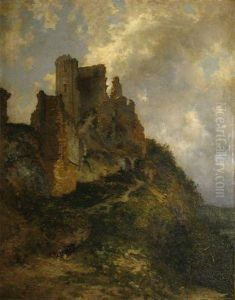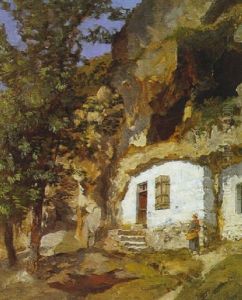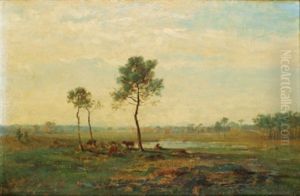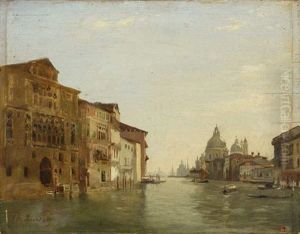Charles Busson Paintings
Charles Busson was a French landscape painter, born in 1822 in Lyon, France. He was part of the Barbizon school, a movement that emphasized the beauty of the French countryside and sought to capture it in a naturalistic manner. Busson's early life was deeply rooted in Lyon, where he developed an affinity for the natural landscapes that would later define his career. He studied art under various local masters, honing his skills and developing a keen eye for the nuances of light and color in nature.
During the mid-19th century, Busson's work began to gain recognition. He was known for his meticulous attention to detail and his ability to evoke the atmosphere and mood of a scene. Unlike some of his contemporaries in the Barbizon school, Busson often focused on the serene and harmonious aspects of nature, rather than its wild, untamed character. His paintings frequently depicted the rural landscapes around Lyon and the Auvergne region, areas that he knew intimately and loved deeply.
In addition to landscapes, Busson also painted rural scenes and occasionally portraits, though it is his landscapes that have garnered the most acclaim. His technique involved careful layering of colors and a subtle use of light, which gave his paintings a distinctive, almost ethereal quality. This approach not only set his work apart from some of his contemporaries but also helped to influence the development of landscape painting in France.
Busson exhibited his works at various salons and exhibitions throughout France, earning accolades and building a reputation as a skilled landscape painter. Despite his success, he remained dedicated to his artistic vision, eschewing the changing trends of the art world in favor of his deep connection to nature and the French countryside.
Charles Busson passed away in 1908, leaving behind a legacy of beautiful, evocative paintings that continue to be celebrated for their contribution to the Barbizon school and French landscape painting. His work is held in several museums and collections in France and around the world, testament to his enduring appeal and the universal appreciation for his depiction of the natural world.
![Paysage A La Mare [ ; Landscape ; Oil On Panel ; Signed And Dedicated Lower Left ]](https://www.niceartgallery.com/imgs/450682/s/charles-busson-paysage-a-la-mare-landscape-oil-on-panel-signed-and-dedicated-lower-left--55feefda.jpg)



















